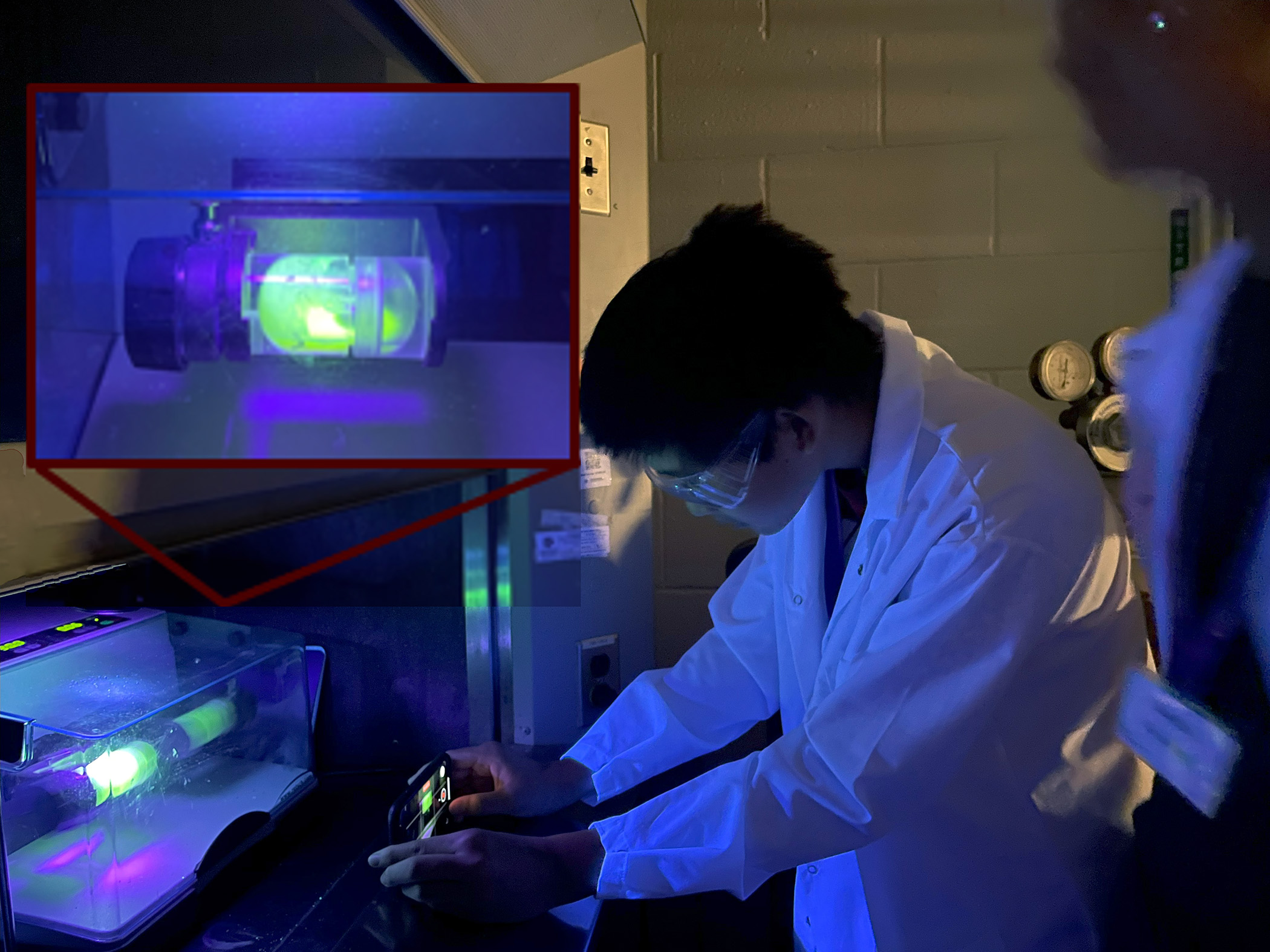
A cross-cutting team of scientists led by Texas A&M University chemist Dr. James D. Batteas has been awarded a five-year, $20 million grant to expand the NSF Center for the Mechanical Control of Chemistry (CMCC).
The CMCC, headquartered at Texas A&M, is the newest center within the National Science Foundation’s portfolio of eight total Phase II Centers for Chemical Innovation (CCI) nationwide funded through the NSF’s Division of Chemistry. The center initially was selected for a $2 million Phase I grant in 2020 that established it as the first CCI in Texas.
Centers for Chemical Innovation bring together researchers with diverse expertise to support high risk, transformative science to energize the chemistry research community to take on grand challenges and to creatively engage the public in science. To accomplish this, according to the NSF, CCIs integrate research with strong broader impacts, including innovation, education, broadening participation and informal science communication. Importantly, the CCI Program supports projects that are too complex and multi-faceted for individuals or small groups of researchers to tackle on their own.
Phase II of the CMCC is a coordinated effort among academic, industrial and national lab partners to form an integrative research and training environment around the common goal of establishing a fundamental understanding of mechanochemistry, or the science of using mechanical force to initiate or drive chemical reactions.
The diversity of interdisciplinary experience brought together in the CMCC's outstanding research team is going to let us tackle key challenges in mechanochemistry that have previously seemed insurmountable It's exciting that team science programs like the CCI allow us to take on such a grand challenge. We truly believe that we are going to change the field of chemistry.
Although mechanochemistry dates to antiquity, developing it into a reliable method for chemical synthesis had largely been ignored because the tools to investigate how the application of force affects reactions were, until recently, highly underdeveloped. To that end, CMCC scientists are creating a new toolbox that will allow researchers to define and control the forces applied to molecules in precise ways and to use these tools as a powerful and versatile means for chemical synthesis, opening the door to new reactions and new materials that cannot be made using traditional synthetic methods.
In addition to conducting fundamental research, the CMCC also will be establishing a Mechanochemistry Innovation Hub that will serve as a nexus for pairing industry and other interested stakeholders with CMCC researchers to explore the feasibility of mechanochemical methods for adaption to critical processes.

"Using traditional chemical methods, chemists have discovered many effective ways to create substances that have enhanced human health and prosperity — like the ammonia essential for agricultural fertilizers, which help provide the world's food supply," said NSF Assistant Director for Mathematical and Physical Sciences Sean L. Jones in the NSF's Aug. 8 announcement. "But such substances could potentially be produced in a more sustainable way through undiscovered techniques of mechanical chemistry. NSF's Center for the Mechanical Control of Chemistry will focus on providing the insights necessary for innovative minds across America to scale it up."
Batteas, together with fellow Texas A&M chemists Dr. Alison Altman and Dr. Daniel Tabor and mechanical engineer Dr. Jonathan Felts, will be working with CMCC researchers across 11 partner institutions: City University of New York (Dr. Adam Braunschweig and Dr. Mateusz Marianski); MIT (Dr. Danna Freedman); Northwestern University (Dr. James Rondinelli); Stanford University (Dr. Hemamala Karunadasa); University of California, Merced (Dr. Ashlie Martini); University of Cincinnati (Dr. James Mack); University of Pennsylvania (Dr. Robert Carpick and Dr. Andrew Rappe); Vanderbilt University (Dr. Tim Hanusa); and the College of William & Mary (Dr. Isaiah Speight). The center's scope of work will feature additional collaborations at Georgia Tech (Dr. Lauren Garten), Ames Laboratories (Dr. Nic Argibay) and the University of Birmingham in the United Kingdom (Dr. Tomislav Friščić).
"The diversity of interdisciplinary experience brought together in the CMCC's outstanding research team is going to let us tackle key challenges in mechanochemistry that have previously seemed insurmountable," said Batteas, Regents Professor and D. Wayne Goodman Professor of Chemistry in the Department of Chemistry and an affiliated faculty member in the Department of Materials Science and Engineering. "It's exciting that team science programs like the CCI allow us to take on such a grand challenge. We truly believe that we are going to change the field of chemistry.”
At the heart of the CMCC is the training of a cadre of graduate and undergraduate students in chemistry, physics, engineering and materials science who will play key roles in center research and outreach activities. To date, these have included a mechanochemistry-themed STEM summer camp for high school students (“Smash Chemistry,” run through the Texas A&M Youth Adventure Program), science history exhibits developed with the Science History Institute in Philadelphia, a summer undergraduate research program and the CMCC Mechanochemistry Discussions online seminar series on YouTube.
Learn more about the Center for Chemical Innovation (CCI) Program or the NSF Division of Chemistry.
